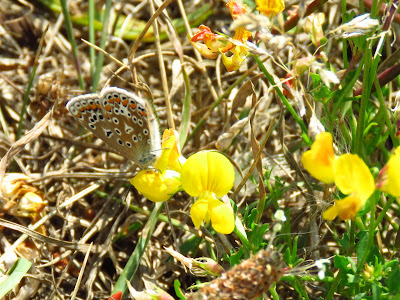 A sunny morning at the patch mainly along the Beverley and Barmston Drain starting at Fountain Bridge. Swallows are first feeding around the trees, but they start gathering on an aerial near the bridge, many juveniles they seem to have done well this year. I wonder if they are two families, 12 in total.
A sunny morning at the patch mainly along the Beverley and Barmston Drain starting at Fountain Bridge. Swallows are first feeding around the trees, but they start gathering on an aerial near the bridge, many juveniles they seem to have done well this year. I wonder if they are two families, 12 in total.
While watching them from the bridge, I became aware of a Reed Warbler on the large fringe of reeds. Then there were two and I briefly saw the parent feeding a fledgling. I saw another Reed Warbler carring food upstream in another section of the drain.

Reed Warbler adult, above the young.
The view from the Fountain Road bridge.
I continue south alongside the drain, parallel to Bridlington Avenue and I peek by the bridge at Barmston street. A Migrant Hawker male, with full blue colours, is patrolling over the water. I'm pleased that it stops briefly on the reeds, where I take a photo.

I checked for dragonflies and damselflies from the pedestrian bridge at Abbey Way. There was a patrolling Emperor, and a Migrant Hawker, which kept splashing onto the water surface, presumably picking insects, but I had never seen them doing this. There were 3-4 Common Darters and a pair of Small Red-eyed Damselflies in tandem.
Migrant Hawker.
Small Red-eyed Damselflies in tandem.
The surprised was a passing Kingfisher, which flew under the bridge and landed nearby. Unfortunately I couldn't get a straight view of it.
Kingfisher.
This looks like a water dropwort, Oenanthe sp. which I have never noticed in the drain.
Small Tortoiseshell.
A male Holly Blue, feeding on bramble blossom.
A Speckled Wood looking faded.
And to finish off, a basking Woodpigeon.

























































